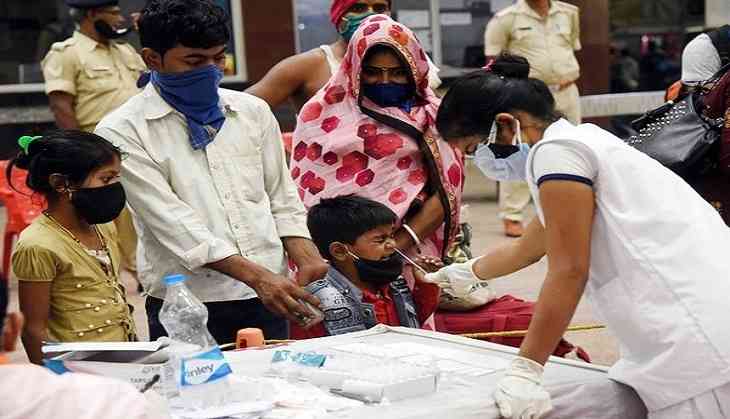
Omicron, a new variant of COVID-19, is rising concerns in India and across the world.
India detected its first Omicron case on December 2 in Karnataka and till now, the country has logged more than a hundred cases of this virus. Before it was reported in India, Omicron cases had been found in 29 countries.
A new variant of COVID-19 was first reported to the World Health Organisation (WHO) from South Africa on November 25. As per the WHO, the first known confirmed B.1.1.529 infection was from a specimen collected on November 9 this year. On November 26, the WHO named the new COVID-19 variant B.1.1.529, which has been detected in South Africa, as 'Omicron'. The WHO has classified Omicron as a 'variant of concern'.
Dozens of countries have imposed travel restrictions on the southern African nations since the mutation was discovered. India has also added several countries to the list from where travellers would need to follow additional measures on arrival in the country, including post-arrival testing for infection.
Daily COVID-19 caseload in India that is currently around 7,500 infections is expected to increase once the Omicron starts displacing Delta as the dominant variant, informed members of the National COVID-19 Supermodel Committee and predicted the third wave in India early year.
Vidyasagar, who is also the head of the National COVID-19 Supermodel Committee, said that India will have Omicron's third wave but it will be milder than the second wave.
"Third wave is likely to arrive early next year in India. It should be milder than the second wave due to a large-scale immunity present in the country now. There will definitely be a third wave. Right now, we are at around 7,500 cases per day which is sure to go up once Omicron starts displacing Delta as the dominant variant," he told ANI.
Vidyasagar, who is also a professor at the Indian Institute of Technology (IIT) in Hyderabad, said that it's unlikely that India will see more daily cases than the second wave.
"It is extremely unlikely that the third wave will see more daily cases than the second wave. Please remember that the Government of India started vaccinating ordinary Indians (i.e., other than front-line workers) only starting March 1, which was just about the time that the Delta variant hit. So the Delta variant hit a population that was 100 per cent vaccine-naive, other than the frontline workers."
He further said that according to a sero-survey, a tiny fraction has left that hasn't come into contact with delta virus, "Now we have sero-prevalence of 75 per cent to 80 per cent (prior exposure), first dose for 85 per cent of adults, both doses for 55 per cent of adults, and a "reach" for the pandemic of 95 per cent (meaning that only a tiny fraction of the public has not come into contact with the virus)."
"So the third wave will not see as many as daily cases as the second wave. We have also built up our capacity based on that experience, so we should be able to cope without difficulty," he said.
Over 101 cases of Omicron variant of COVID-19 have so far have been detected across 11 States and Union Territories.
Addressing a press conference, Joint Secretary of Health Ministry, Lav Agarwal said that 32 cases were reported in Maharashtra, 22 in Delhi, 17 in Rajasthan, 8 each in Karnataka and Telangana, 5 each in Gujarat and Kerala, one each in Andhra Pradesh, Chandigarh, Tamil Nadu and West Bengal respectively.
"World Health Organisation (WHO) has said that Omicron is spreading faster than the Delta variant in South Africa where Delta circulation was low. It's likely Omicron will outpace Delta variant where community transmission occurs, WHO added," Agarwal said.
The Health Ministry official further lauded the country's COVID-19 vaccination drive and said that India is administering COVID-19 vaccine doses at the highest rate in the world and the daily rate of doses administered is 4.8 times the rate of doses administered in the USA and 12.5 times the rate of doses administered in the UK.
He also informed that Kerala contributes 40.31 per cent to the total number of active cases in the country.
"New daily cases were recorded below 10,000 for the past 20 days. The case positivity for the last one week was 0.65 per cent. Currently, Kerala contributes 40.31 per cent to the total number of active cases in the country," Agarwal added.
(ANI)


